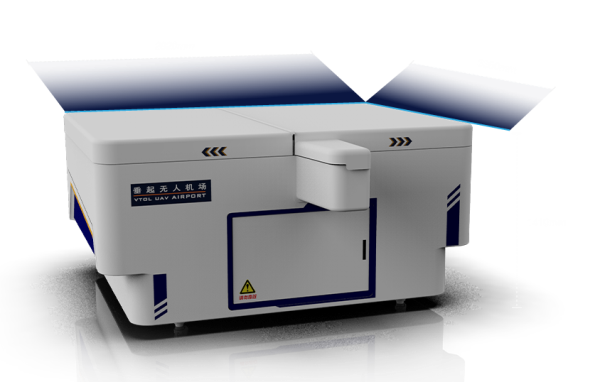
Introduction: With the development of technology, the application of drones in various fields is becoming increasingly widespread. Among them, unmanned aerial vehicle (UAV) automated airports have obvious advantages in maritime inspections, law enforcement, and rescue. In the future, with the continuous development of technology and the accumulation of application experience, unmanned aerial vehicle (UAV) automated airports will play an important role in more fields.

Note: Only basic equipment information is recommended, details can be consulted!

Traditional maritime inspections require a significant amount of manpower and material resources, and are limited by the influence of manpower and geographical environment, resulting in limited inspection scope and efficiency. The emergence of unmanned aerial vehicle automated airports has brought revolutionary changes to maritime inspections. Firstly, drone automated airports can quickly deploy and retrieve drones, greatly improving the efficiency of inspections. Secondly, drones have high-resolution cameras and sensors that can transmit high-definition images and data in real-time, providing more accurate and comprehensive information for maritime departments. In addition, drones can also conduct aerial patrols, not limited by geographical and climatic conditions, and can quickly cover large areas of the sea, timely detect and deal with various safety hazards and emergencies.

Law enforcement agencies need to face various complex environments and challenges when carrying out their tasks. The emergence of unmanned aerial vehicle automated airports has provided law enforcement agencies with more flexible and efficient enforcement methods. First of all, UAVs can quickly arrive at the scene to monitor and track suspect to avoid their escape and destruction of evidence. Secondly, drones can carry law enforcement equipment to collect evidence and investigate illegal activities, improving the accuracy and efficiency of law enforcement. In addition, drones can also conduct aerial monitoring and reconnaissance, timely detect and deal with illegal and criminal activities, and ensure public safety and social stability.

In terms of rescue, unmanned aerial vehicle (UAV) automated airports have unique advantages. Firstly, drones can quickly reach the accident site, provide preliminary treatment and transfer of injured personnel, and provide valuable time for rescue personnel. Secondly, drones can carry rescue equipment and medicine to provide timely assistance and treatment to disaster victims. In addition, drones can also conduct aerial reconnaissance and search, searching for missing persons and trapped victims, improving the efficiency and success rate of rescue efforts.

Of course, there are also some problems and challenges with unmanned aerial vehicle (UAV) automated airports. For example, how to ensure the safety and reliability of drones, how to ensure the legitimate use of drones, and how to handle drone malfunctions and maintenance. But with the continuous progress of technology and the accumulation of application experience, these problems will be gradually solved.


Recommended product: Honeycomb Aerospace SU-50 Composite Wing Intelligent Unmanned Airport
Drone model: HC-525 inspection drone
Wing span: 3200mm
Captain: 1780mm
Maximum takeoff weight: 22kg
Load capacity: 2kg
Battery life: 90 min
Cruise speed: 80-90km/h
Takeoff and landing accuracy: maximum error not exceeding 30cm
Assignment radius: 50km
Lift limit: 3000m
Wind resistance level: Level 6 (cruise phase)
Cabin size: 2820 x 3350 x 1410mm
Cabin weight: 1600kg
Cabin power: 2000W/3000W (including temperature control)
Cabin communication method: 4G/5G/private network
In summary, unmanned aerial vehicle (UAV) automated airports have significant advantages in maritime inspection, law enforcement, and rescue. Firstly, it can quickly deploy and recover drones, improving the efficiency of inspections; Secondly, it can provide high-definition images and data, providing law enforcement agencies with more accurate and comprehensive information; Finally, it can conduct aerial patrols, surveillance, and reconnaissance, improving the efficiency and success rate of rescue operations. By comprehensively evaluating different models and brands of drones and automated airports, select the equipment that best suits your own needs to improve the efficiency and safety of maritime inspection, law enforcement, and rescue work.
Recommended departments: maritime sector






